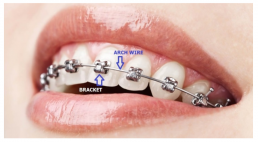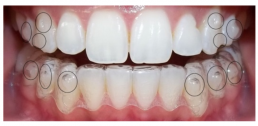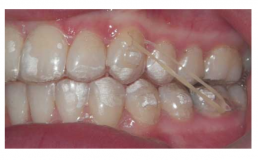Orthodontics refers to the movement of teeth in Adults and Children.
Sometimes it is used on its own or often in conjunction with other treatment. Such as whitening, veneers, contouring or edge bonding.

At your consultation, we will talk you through all the latest Orthodontic treatment options to help you achieve your desired goals.
Each treatment is individual to you so an estimate will be given at your initial appointment but here are some guide prices. All cases must complete a New Patient Exam prior to treatment to make sure your teeth are healthy and treatment is suitable for you. Prices are dependant on complexity, generally, patients fall into mild, moderate or complete. Whether they require full upper and lower, or minimal single arch.
We have a combination of brands and types of braces available, depending on what best suits your lifestyle and treatment requirements.

Fixed braces are brackets bonded to your teeth so that they can apply pressure continues to move the teeth into a new position.
The brackets come in traditional metal for strength as well as ceramic tooth coloured brackets.
A wire is in a perfect arch when a wire is fitted to your teeth it becomes distorted to fit around your teeth, the wire has a memory; this wire will apply pressure to move the teeth back to its original arch shape. Your orthodontist will change the Wire and Ligatures regularly each time the new wire will be slightly stronger.
Your teeth are not used to being moved so it is common to experience some discomfort. This is normally the first week and will slowly disappear.
If at any point during treatment your feel something is hurting, contact the dentist immediately. It may be the brace needs a slight adjustment. If you think something has broken do not leave it as this may prolong your treatment.
We will provide you with some wax, this is to help if any of the appliances are irritating or rubbing on the soft tissue, roll up a bit of wax and place over the area.
During treatment, you will need to be careful with eating certain foods, we would recommend avoiding anything sticky like gum, toffees or sweets, and anything hard that you need to use your front teeth to bite. Cut everything up into small pieces, this will limit breakages. You need to keep your mouth as clean as possible, taking extra care to clean around the brackets; the hygienist will be able to show you effective techniques to do this properly. We may also recommend a fluoride mouthwash or toothpaste to prevent decalcification that can lead to cavities.
It’s important to stick to your appointments, and follow the above advice so as not to prolong your treatment.
After treatment you will need to wear a retainer, this can be either fixed (behind your front teeth) or removable. You can discuss the best option with your clinician.

Check the aligners fitfully to the edge of the teeth. If you are noticing space then make an appointment.
If an aligner gets lost of damaged go back to the previous stage and make an appointment.
You should see the hygienist regularly every 3/12 throughout treatment to maintain your gum health.
You routine dental exams should still be kept throughout treatment.

Attachments may be required during treatment, these are small tooth coloured material that is bonded to your teeth to create an anchorage on certain teeth to help them move.
They are bonded on the teeth at the start of treatment and will stay until the end.
These can create rotation, intrusion and movement in and along the arch.
If these attachments come off during treatment make an appointment to have them replaced.
It is common to require IPR during treatment. This means creating space between the teeth to open contacts and allow teeth to move. It prevents the need for tooth removal and will improve the shape of the final result.

Small rubber bands are also commonly used towards the end of treatment to improve the way your teeth meet together. Correcting your bite and jaw position is important for future protection of the teeth.
If you need elastics you will be given instructions on how to wear them and for how long. You will have to remove them when eating and cleaning then replace straight after.
| Orthodontist Consultation | £150.00 |
| Clear Removable Aligners | from £4000.00 |
| Fixed Braces | From £2500.00 |
| Lingual Braces | From £8000.00 |